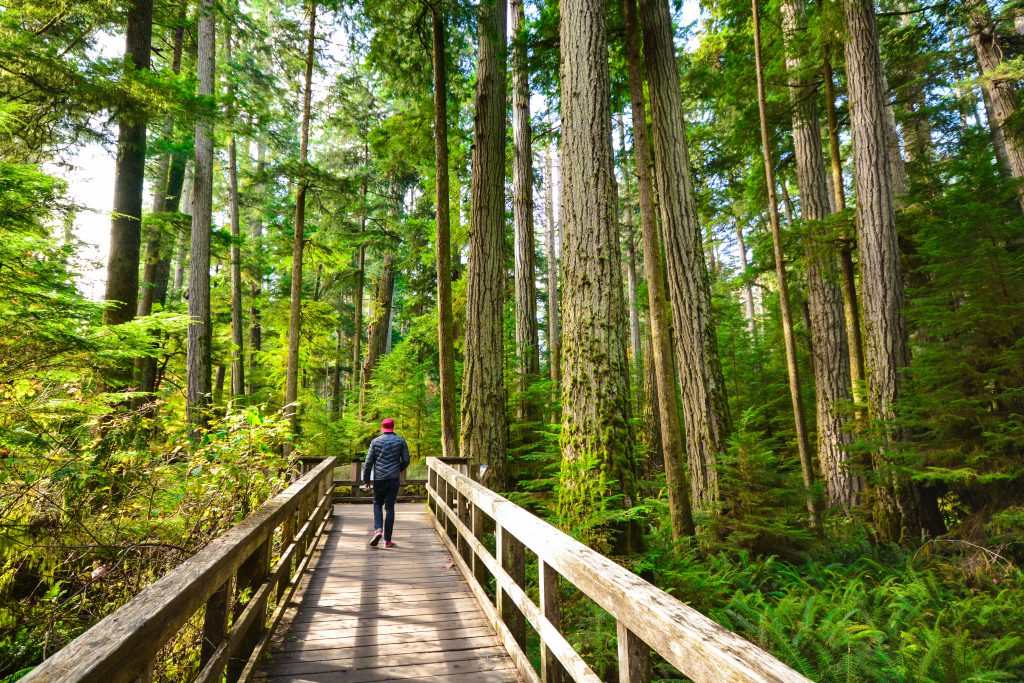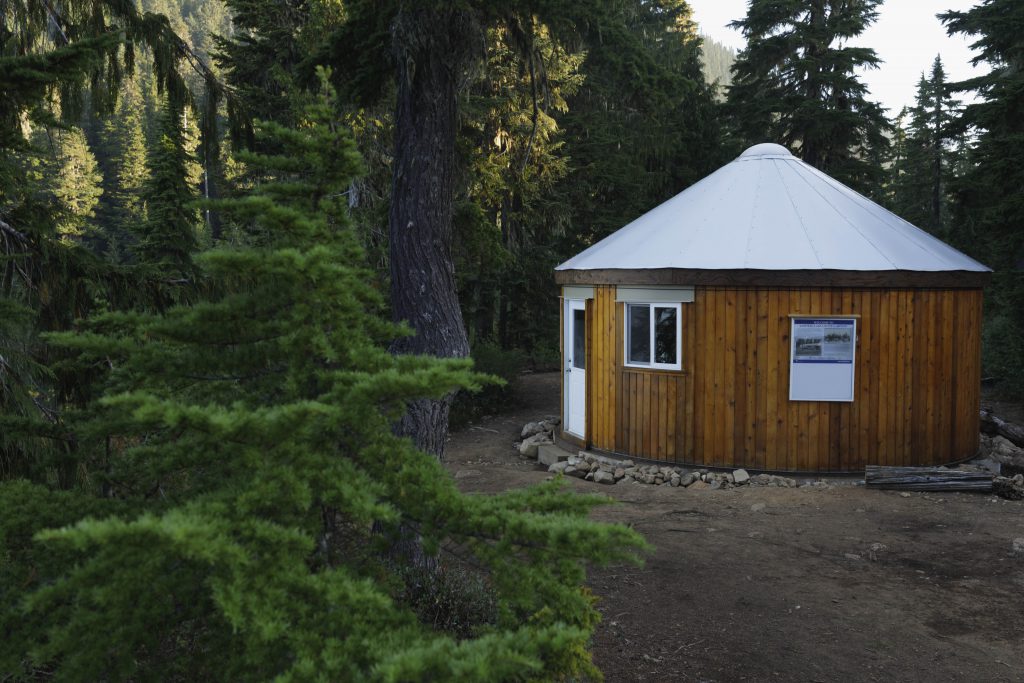Carrying Capacity and BC Parks
Categories:
Did you know that over 14 % of land in B.C. is a park or protected area? That’s a lot of space! Approximately 14 million hectares of land are protected areas within BC Parks’ network, and there’s a lot that goes on in there. One of the many things we consider when managing our parks is something called “carrying capacity.”
What is carrying capacity?

Carrying capacity can be used in lots of different contexts. At the most basic level, carrying capacity refers to the maximum amount of something that can be sustainably managed within a given space. Confused? That’s okay. Carrying capacity can be complicated, so it’s best to think about it in simple terms at first.
Think about a classroom filled with desks, chairs, and textbooks. If every person needs one desk, one chair, and one textbook, the number of people that can fit in that space while also being provided for is that room’s carrying capacity. So, if there are 20 desks, 20 chairs, and 20 textbooks, the carrying capacity for the classroom is 20 people. If you exceed this number, these students won’t have enough resources: some will have to sit on the floor or go without a textbook.
Carrying capacity may be limited by materials, like in the classroom example, or it can be reliant on space. For example, barnacles settle on hard, often rocky, surfaces. The carrying capacity for a barnacle population depends on the amount of open space, and once that space is full of barnacles the area is at capacity. Here, it is space that determines the carrying capacity.
Carrying capacity and BC Parks

Carrying capacity can be used as a broad term to refer to ecological carrying capacity, facility capacity, or visitor capacity. In BC Parks, we look at all three components to determine if our parks are within their capacity, or if management strategies need to be implemented to ensure the park is well managed and cared for.
Facility Capacity

The sizes of our facilities can help determine visitor capacity. For example, there is a certain number of campsites in each campground, thus limiting the number of users within a campground. Of course, the size of campgrounds can be expanded or reduced, and therefore the number of people they can accommodate can change.
It’s easy to limit use in campgrounds, where there are a fixed number of campsites (no illegal camping, please!), but maintaining a balance between recreation and the protection of cultural and environmental values is important in all types of parks.
Visitor capacity is also a two-way street. Sometimes it is determined by the size of our facilities, but sometimes it determines facilities instead. For example, one strategy that can be used to ensure that the natural habitat is preserved and the visitor experience is positive involves the creation of boardwalks and restoration barriers to ensure people stay on the trail.
Ecological Capacity

Conservation and sustainability are key values to BC Parks and drive much of the work we do. While broadening our trail network may increase visitor capacity and strengthen the recreational values of our parks, these trails and increased visitation can have an impact on wildlife or vegetation. Because of this, measuring the capacity for plants and animals to thrive in our parks is another determining factor of visitor capacity.
Visitor Capacity

This capacity is determined by the maximum number of people that can use an area while still maintaining other values, such as ecological, cultural, and positive visitor experience values. Here is where the subjectivity of visitor capacity really comes into play. There are hundreds of parks in B.C., and each one offers a unique experience. What makes your favourite park so great? Maybe you like the peaceful solitude you find there, or perhaps you’re a fan of the plentiful campsites where you can enjoy a weekend off with a bunch of your friends. Whatever it is you’re seeking, these parks are managed in a certain way to provide you with a broad range of park experiences. Determining and managing visitor capacity allows for different opportunities in different parks.
So, now that you know a bit about how we manage our parks, what role can you play?

It is so important to us that people get out and experience nature, but it is also important to be good stewards. By following sustainable practices and being a respectful park visitor, you can help ensure everyone has a positive park experience. Picking up garbage, leaving wildlife alone, and treating other visitors with respect goes a long way to ensuring our parks are well cared for. Conservation and positive recreation experiences are both very important to BC Parks, so we have to ensure these values coexist.
So, the next time you’re in a park, remember that old saying, “take nothing but pictures, leave nothing but footprints.” You’ll make the park a better place, not only for yourself, but for everyone else, too.




